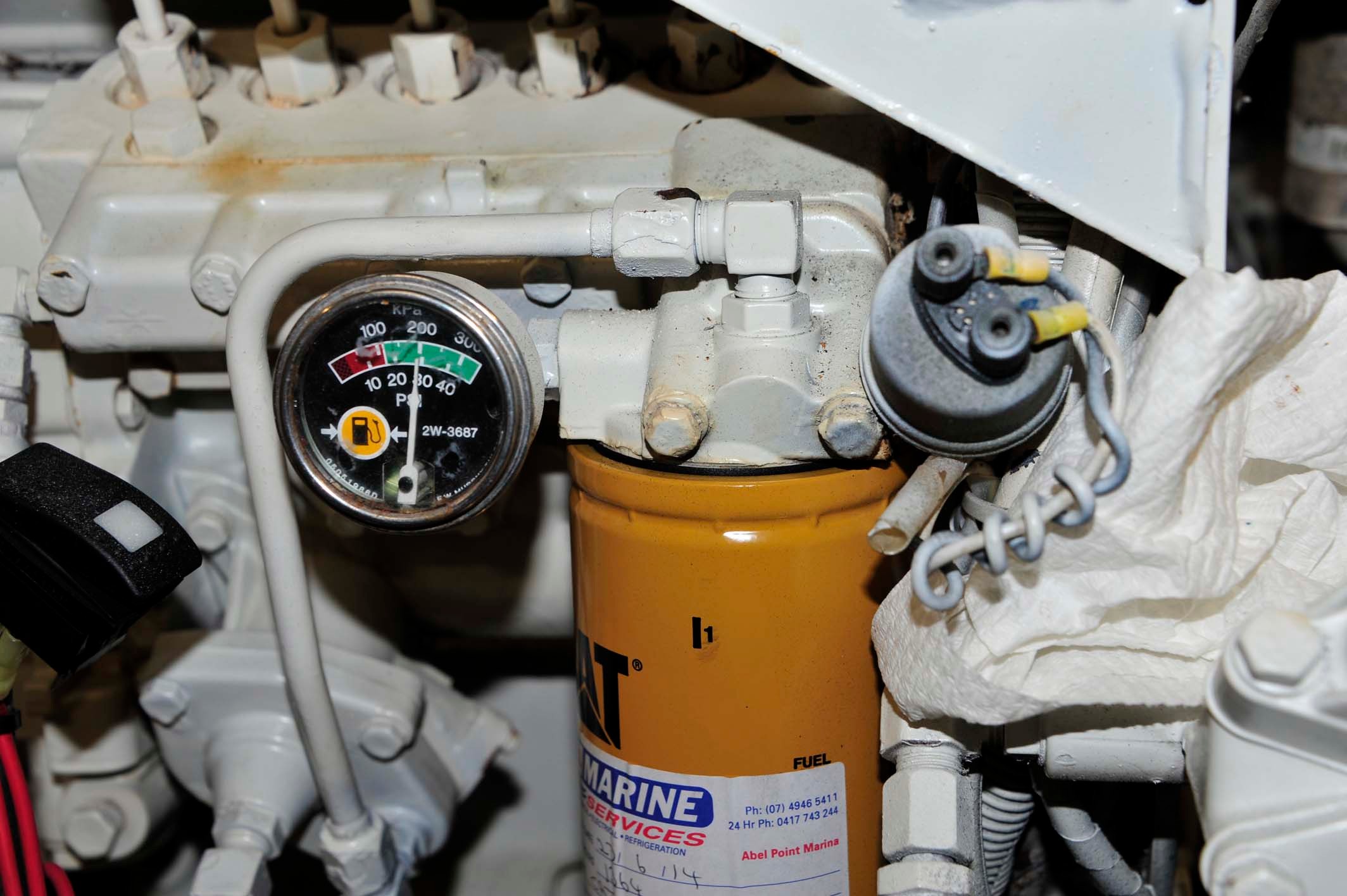Monitoring the Secondary Fuel Filter
Photo and text by Steve D’Antonio
Copyright 2015 SDMC, Inc.
Fuel filters, and monitoring thereof, is, or should be a fixation with vessel operators. After all, for want of a clean, $25 or less filter, even the mightiest diesel engine can quickly be brought to its knees. Once that happens, a vessel may be at the mercy of wind and wave.
Monitoring of primary filters is relatively easy, install a vacuum gauge in the plumbing between the filter outlet and the engine and you’ll quickly and easily be able to determine the level of debris retained by the filter element. While tandem MAXX series Racor filters come with a gauge located in the manifold, a vacuum gauge can be added to any primary filter housing, preferably in the plumbing rather than in the T handle.
I’m often asked by skippers, however, what to do about the secondary filter, the one on the engine, how is one to know when to change it. Logic dictates that if the primary is clogged so too will the secondary be clogged. Yet, that’s not necessarily true, I’ve encountered more than a few cases of ultra-fine particulate contamination that overwhelmed the secondary, yet left the primary filter nearly untouched.
While carrying out an inspection aboard a vessel in Australia a couple of months ago I encountered a Caterpillar engine with a useful component, a pressure gauge installed on the outlet side of the secondary filter. These gauges are common on Cats, and they make very good sense, as they provide a clear indication of the entire fuel supply system up to that point; if the pressure drops it’s typically an indication of secondary fuel filter blockage, however, the gauge can be affected with issues that include the primary and secondary filters, as well as the fuel lift pump.
For more information on the services provided by Steve D’Antonio Marine Consulting, Inc. please e mail Steve at info@stevedmarineconsulting.com or call 804-776-0981



